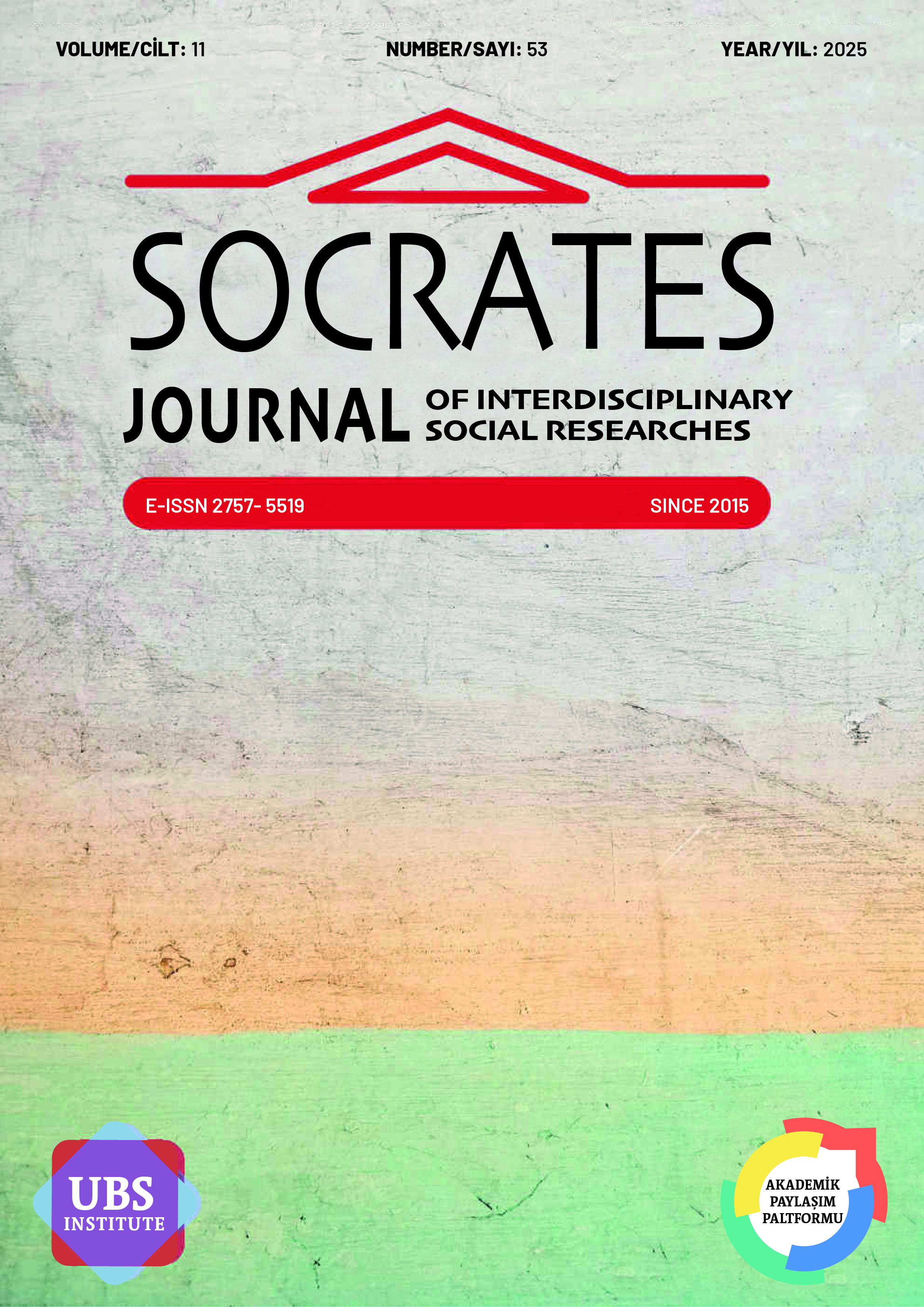EĞİTİM FAKÜLTESİ 3. VE 4. SINIFLARINDA OKUYAN ÖĞRENCİLERİN MATEMATİKSEL MERAK DÜZEYLERİNİN İNCELENMESİ
INVESTIGATION OF MATHEMATICAL CURIOSITY LEVELS OF STUDENTS STUDYING IN THE 3RD AND 4TH GRADES OF THE FACULTY OF EDUCATION
DOI:
https://doi.org/10.5281/zenodo.15564763Anahtar Kelimeler:
Öğretmen Adayları, Matematik, Merak, Matematiksel MerakÖzet
Yapılan araştırmada eğitim fakültesi 3. ve 4. sınıflarında okuyan öğrencilerin matematiksel merak düzeylerinin incelenmesi amaçlanmaktadır. Araştırmada nicel araştırma yöntemlerinden tarama modeli kullanılmıştır. Araştırmanın evrenini dört farklı üniversitenin Eğitim Fakültesi 3. ve 4. Sınıflarında Okuyan Sınıf öğretmenliği ve İlköğretim Matematik öğretmenliği öğrencileri oluşturmaktadır. Araştırma için uygun örnekleme yöntemi kullanılmıştır. Uygun örnekleme yöntemi kapsamında gönüllü 420 öğretmen adayı araştırmanın örneklemini oluşturmaktadır. Araştırmada veri toplama aracı olarak “Matematiksel Merak Ölçeği” kullanılmıştır. Veriler, normal dağılım şartını sağladığı için, betimsel istatistik yöntemlerinin yanı sıra Bağımsız Örneklemler t-Testi ve ANOVA gibi parametrik testler kullanılarak analiz edilmiştir. Araştırmanın bulgularına göre, öğretmen adaylarının matematiksel merak düzeyleri orta düzeyde olduğu belirlenmiştir. Ayrıca, öğretmen adaylarının matematiksel merak düzeylerinin cinsiyete göre anlamlı bir farklılık gösterdiği, bu farkın erkekler lehine olduğu tespit edilmiştir. Öğrenim görülen sınıf değişkeni açısından yapılan analizlerde ise, dördüncü sınıflarda öğrenim gören öğretmen adaylarının matematiksel merak düzeylerinin anlamlı derecede daha yüksek olduğu belirlenmiştir.
Referanslar
Aziz, A. (2015). Sosyal bilimlerde araştırma yöntemleri ve teknikleri. Nobel
Baydar, S. C. ve Bulut, S. (2002). Öğretmenlerin Matematiğin Doğası Ve Öğretimi İle İlgili İnançlarının Matematik Eğitimindeki Önemi. Hacettepe Üniversitesi Eğitim Fakültesi Dergisi, 23, 62-66.
George, D., & Mallery, M. (2010). SPSS for windows step bysstep: A simple guide and reference. Pearson.
Gürbüz, S. ve Şahin, F. (2017). Sosyal bilimlerde araştırma yöntemleri. Seçkin Yayıncılık.
Hyde, J. S., & Linn, M. C. (2006). Gender similarities in mathematics and science. Science, 314(5799), 599-600. https://doi.org/10.1126/science.1132154
Işık, A., Çiltaş, A. ve Bekdemir, M. (2008). Matematik eğitiminin gerekliliği ve önemi. Atatürk Üniversitesi Kazım Karabekir Eğitim Fakültesi Dergisi, (17), 174-184.
Karasar, N. (2020). Bilimsel araştırma yöntemi (36. Baskı). Nobel Akademik.
Litman, J. A. (2005). Curiosity and the pleasures of learning: Wanting and liking new information. Cognition and Emotion, 19(6), 793-814. https://doi.org/10.1080/02699930541000101
Litman, J. A. (2008). Interest and deprivation factors of epistemic curiosity. Personality and Individual Differences, 44(7), 1585-1595. https://doi.org/10.1016/j.paid.2008.01.014
Piaget, J. (1972). The psychology of the child. Basic Books.
Pluck, G., & Johnson, H. L. (2011). Stimulating curiosity to enhance learning. Education Sciences And Psychology, 2(19), 24-31.
Renninger, K. A., & Hidi, S. (2016). The power of interest for motivation and engagement. Routledge.
Ryan, R. M., & Deci, E. L. (2000). Intrinsic and extrinsic motivations: Classic definitions and new directions. Contemporary Educational Psychology, 25(1), 54-67. https://doi.org/10.1006/ceps.1999.1020
Tabachnick, B.G., & Fidell, L.S. (2013). Using multivariate statistics. (6. edition). Pearson Education.
Usluoğlu, B. ve Toptaş, V. (2021). Sınıf öğretmenleri ve öğretmen adaylarına yönelik matematiksel merak ölçeği: Geçerlik ve güvenirlik çalışması. International Primary Education Research Journal, 5(1), 18-28.
Yıldırım, C. (2019). Matematiksel düşünme. Remzi Kitabevi.
İndir
Yayınlanmış
Nasıl Atıf Yapılır
Sayı
Bölüm
Lisans
Telif Hakkı (c) 2025 Socrates Journal of Interdisciplinary Social Researches

Bu çalışma Creative Commons Attribution 4.0 International License ile lisanslanmıştır.


